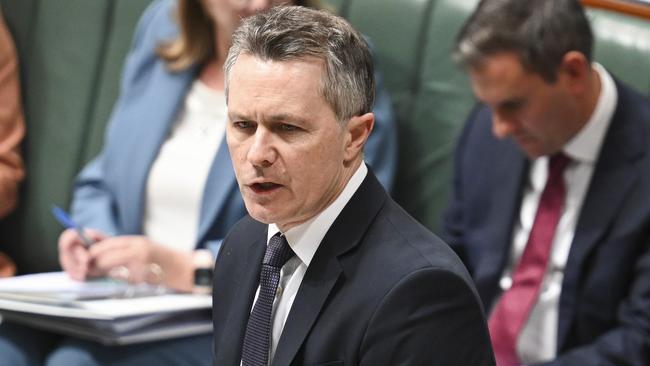Education Minister Jason Clare says migrant blowout due to international students, backpackers and visa overstays
Education Minister Jason Clare said there were three main issues behind Australia’s “too high” migration figures, which will surely exceed forecasted numbers.

Education Minister Jason Clare has conceded Australia’s immigration figures are “too high,” blaming a triple-barrel issue of international students, an influx of backpackers and people overstaying their visas.
On Thursday, figures from the Australian Bureau of Statistics (ABS) revealed Australia’s population had increased to more than 27.1 million people, with 388,000 overseas migrants moving to Australia in the first nine months of the 2023-24 financial year.
The figures guarantee migration figures will blow out beyond the 395,000 forecast from this year’s budget.

Speaking on Sunrise, Mr Clare said the government needed to reign in the figures, which would be aided by the proposed legislation to cap international student numbers to 270,000 in 2024.
“Well immigration is too high, we’ve got to bring it down,” he said.
However, he said there were other issues contributing to the ballooning migration numbers.
“One part is international students. We’ve seen students come back very quickly after the pandemic,” he said.
“Part of it is backpackers, and part of it is people overstaying their visas. They’re the three big parts of this number.”
Deputy Liberal Leader Sussan Ley said the Coalition was still analysing the proposed student cap, however said their were “different components” to the overall migration figure.
“There needs to be a very careful discussion about the effect that has on different communities and different sectors,” she said.
State Aussies are fleeing from in droves
The ABS data also revealed there was one Australian state where residents fled in droves to other parts of the nation as more than 100,000 residents moved interstate.
In NSW, 112,838 people relocated to other parts of Australia, and a further 73,239 people moved overseas.
NSW, South Australia, Tasmania and the Northern Territory all had more people leave their states compared to those who relocated there from other parts of Australia or internationally.

There was also a mass exodus from Queensland, which saw 76,000 residents leave the Sunshine State and move elsewhere in the country and another 39,171 residents head overseas, but welcomed more than 200,000 new residents.
In Victoria, almost 57,000 people flocked overseas, while another 74,415 moved interstate.
Western Australia had the highest population growth, increasing by 3.1 per cent since last year, which saw 36,145 Australians head west, while 86,443 people moved there from overseas.
But Sydney and Melbourne still attracted the highest number of migrants, with more than 440,000 moving to Australia’s biggest cities from other parts of the world.
ABS head of demography Beidar Cho said net overseas migration drove 83 per cent of this population growth, while births and deaths, known as natural increase, made up the other 17 per cent.

In March, annual net overseas migration was 509,800 people, down from a peak of almost 560,000 in September 2023.
The fastest growing population was in Western Australia, up 3.1 per cent from the previous year, followed by Victoria, which grew by 2.7 per cent, and Queensland, which grew by 2.5 per cent.
Tasmania had the lowest growth, at 0.4 per cent.
NSW’s population grew by 2 per cent, the ACT increased by 1.8 per cent and South Australia’s increased by 1.5 per cent.
Tasmania had the lowest growth, at 0.4 per cent, and the Northern Territory population grew by 0.8 per cent.


